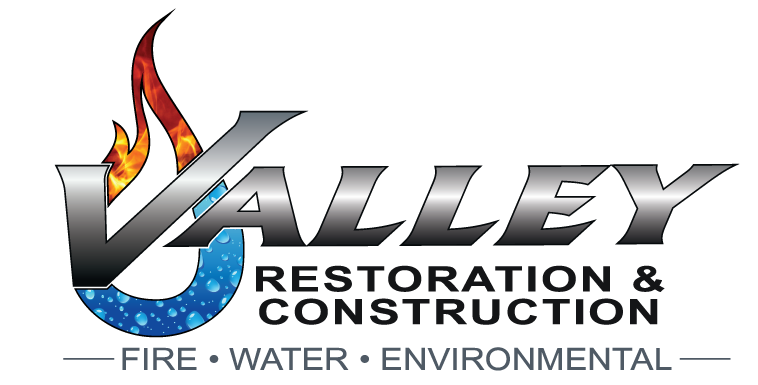Cleaning, sanitizing, disinfecting, sterilizing, deodorizing. People often use these terms interchangeably but they actually carry different meanings to cleaning professionals like Valley Restoration and Construction.
When a water, fire, or smoke disaster has happened, we are called to mitigate the damage and start the cleaning process. A significant part of emergency mitigation is to clean, sanitize, and disinfect the affected areas. The goal is to restore your home to a habitable and safe state.
When we talk about the cleaning process, we have in mind a series of steps that range from conventional cleaning to more robust disinfecting, depending on the damage. For example, sewage water damage will require disinfecting while smoke damage needs deodorizing to neutralize the lingering smoke particles from the air.
Here is a small guide to help you understand what each term means.
Cleaning
Cleaning removes dust, soil, and visible dirt from surfaces. When you clean, you usually wipe surfaces with water and soap or a detergent. Cleaning also includes cleaning the floor with a vacuum and mopping it, as well as cleaning windows with glass cleaners.
Cleaning is essential if you want your home to feel fresh and nice. It removes dirt, allergens, and microorganisms, which can potentially become breeding grounds for bacteria and viruses.
However, cleaning doesn’t kill bacteria or viruses. It simply removes any obvious dirt from surfaces and is a necessary step before our crew starts sanitizing and disinfecting.
Where does most cleaning happen? Floors, doors, and windows are the most common surfaces that should be cleaned to ensure a healthy living environment.
Sanitizing
Sanitizing takes cleaning a step further. With various detergents and cleaning agents, sanitizing reduces the amount of bacteria on surfaces.
You should sanitize your kitchen counters where food is prepared to minimize bacterial growth and ensure food preparation is safe, especially when it comes to raw meat. It is also a good idea to sanitize your bathroom and other common spaces where many people live.
Sanitizing doesn’t kill all bacteria; it just lowers their numbers. Also, sanitizing doesn’t kill viruses and fungi. The flu, Covid-19, the common cold, and chicken pox are some examples of viruses. As for fungi, they are responsible for mold growth in houses and can start growing within 24 to 48 hours of a water disaster.
When water or fire damage has occurred, we first clean and then sanitize. The reason is that we don’t want to cross-contaminate areas with dangerous bacteria. We then proceed with disinfection, which will take care of all remaining bacteria as well as any viruses and fungi that have built up after the disaster.
Disinfecting
Disinfecting kills bacteria, viruses, and fungi and stops their growth. With the help of specific detergents such as bleach, chlorine, or alcohol, you can disinfect kitchens, bathrooms, and other common areas such as hospitals, doctors’ offices, and schools.
Specialized restoration and mitigation companies like Valley Restoration and Construction in Montrose, Colorado, use disinfectant foggers, which distribute disinfecting chemicals in the air to kill bacteria and viruses that are airborne or sitting on hard-to-reach surfaces. Disinfectant foggers are an efficient way to disinfect large areas.
Sterilizing
Sterilizing is necessary for surgery and hospitals. It eliminates all germs, bacteria, viruses, and fungi to make it safe for people to have surgery. Dentists also sterilize their equipment.
Professional crews sterilize with specific chemicals or radiation. Surgical equipment and smaller pieces of gear can be sterilized through steaming or heating with specialized equipment.
Mitigation and restoration companies usually don’t sterilize homes and other areas because it’s not necessary. However, we can do so in cases where it is required.
Deodorizing
Smoke can leave behind a debilitating and dangerous smell. It won’t come out of clothes, materials, and upholstery just by airing the house. Worse, smoke particles survive in the air for weeks.
If you want your home to smell nice and be safe for you and your family after a fire, you need Valley Restoration and Construction to deodorize your home. When we deodorize, we clean the air with thermal fogging, ozone, and HEPA filters that capture smoke particles.
Such deodorizing equipment is not available to homeowners, but quality restoration and mitigation companies have the necessary supplies to clean the air of your home after a fire.
Cleaning, Sanitizing, Disinfecting, and Deodorizing
If your home has suffered from fire, water, or smoke damage, you will require specialized cleaning services. Trust Valley Restoration and Construction in Montrose, Colorado to make your home safe and clean for you and your family. Contact us now online or call us at 970-964-4437. We are available 24/7 and have the know-how and equipment to restore your house to its pristine condition.
